Top speed 435 km/h Wingspan 14 m Introduced 1942 Manufacturer Saab Group | Range 1,800 km Length 10 m First flight May 18, 1940 | |
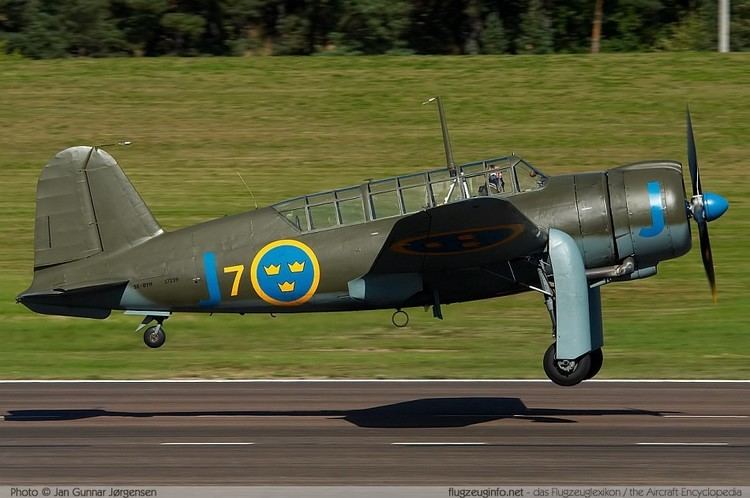 | ||
B 17 saab 17
The Saab 17 was a Swedish bomber-reconnaissance aircraft.
Contents
- B 17 saab 17
- Saab 17
- Development and service
- Operational history
- Variants
- Operators
- Survivors
- Specifications B 17C
- References
Saab 17
Development and service
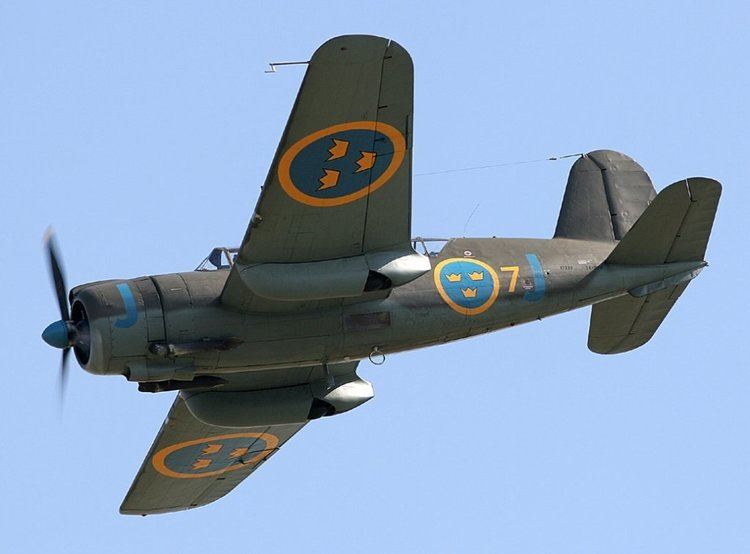
The project first started at the end of the 1930s as the L 10 by ASJA, but after the merger with Saab in 1937 it was renamed Saab 17. The wings were reinforced to make it possible for use as a dive bomber. Since there was a shortage of engines the aircraft were flown to their destination, where the engines were removed and returned for use by the next delivery. The aircraft was also made in three versions with different engines.
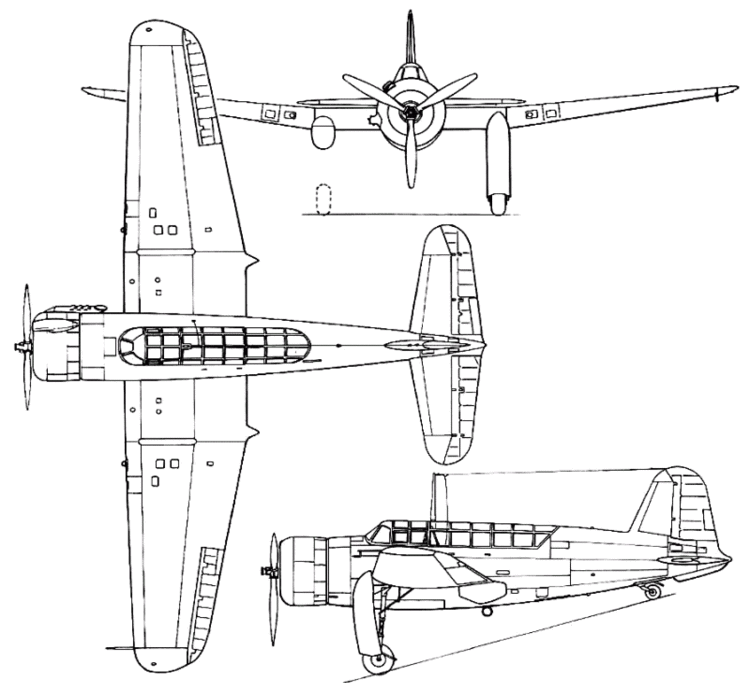
Two prototype L-10 aircraft were ordered, the first being powered by a 880 hp (660 kW) Nohab-built Bristol Mercury XII and the second by a 1,065 hp (794 kW) Pratt & Whitney R-1830 Twin Wasp.
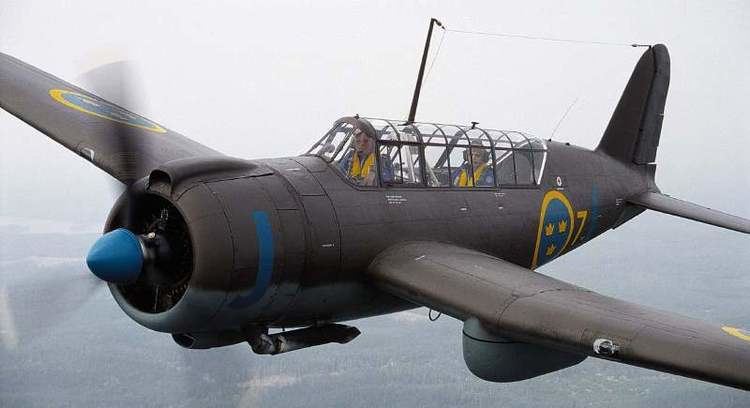
The production B 17A used a Swedish-built Pratt & Whitney Twin Wasp, the B 17B a Svenska Flygmotor AB (SFA)-built Bristol Mercury XXIV, and the B 17C a Piaggio P.XI. The aircraft could be fitted with wheels, skis or floats. A unique feature of the Saab 17 was its use of the extended landing gear assembly, with its large covers, as dive brakes.
Operational history
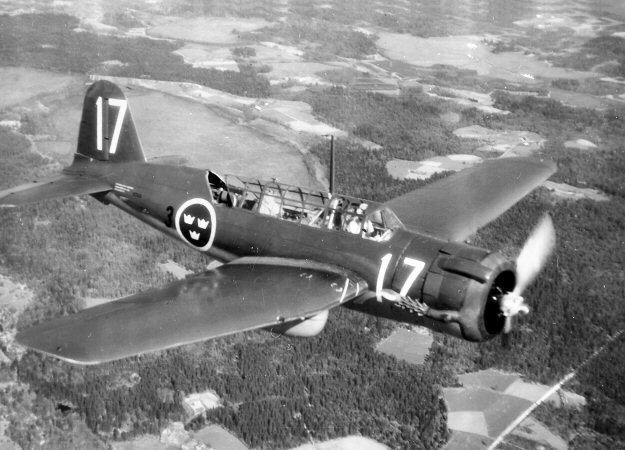
The first test flight was on 18 May 1940 and first deliveries to the Flygvapnet (Swedish Air Force) were in 1942. However, the development of the turbojet meant it had a short service history, but when the B 17 ended Swedish service in 1947–50, 46 were sold to Ethiopia, remaining in service until 1968. Two B 17As were sold to Finland in 1959 and 1960, serving as target tugs for the Finnish Air Force, both succumbing to accidents fairly quickly. For some months from very early 1945 15 B 17A were issued to DANFORCE (Danish Brigade of 5000 men in Sweden). However, as things unfolded with the German surrender – there was no use for these in the liberation of Denmark, and the aircraft were returned to the Flygvapnet a couple of months after the German surrender.
Variants
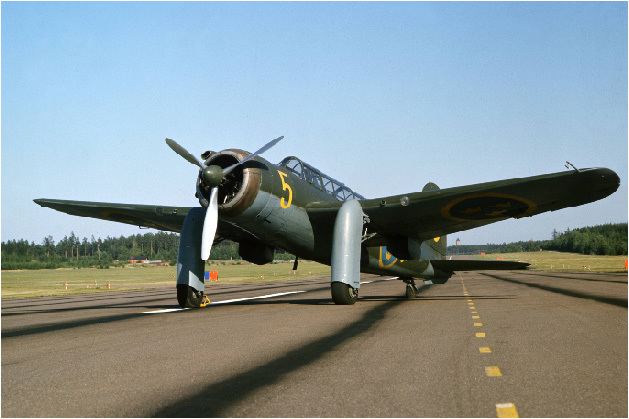
The SAAB 17 had a total production run of 323 aircraft.
Operators
Survivors
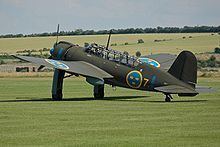
Five SAAB 17s are known to be in existence today. The Swedish Air Force Museum in Linköping has two aircraft in their collection, one S 17BL and one B 17A, the latter being kept in airworthy condition. Another B 17A is on display at the Danish Museum of Science and Technology in Helsingør. Two former Ethiopian B 17As were recovered in the 1990s and purchased by a South African collector. These are last known to have been relocated to Lithuania but their current status is not clear.
Specifications (B 17C)
Data from Saab Aircraft since 1937
General characteristics
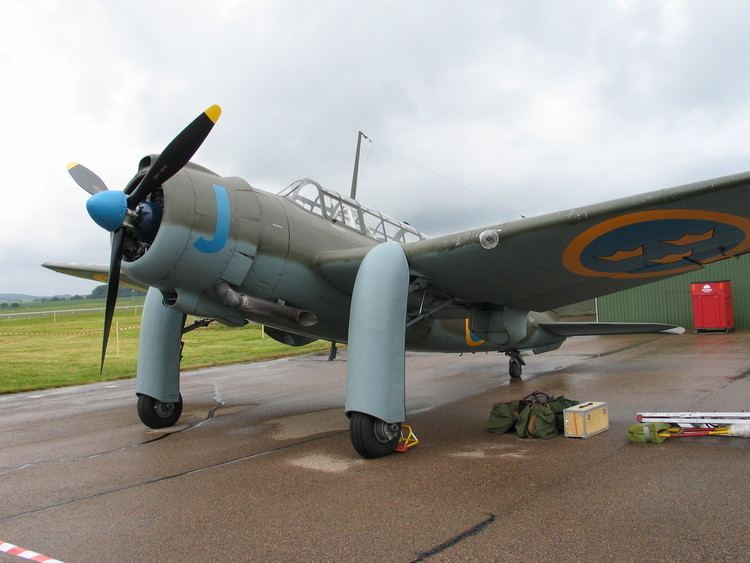
Performance

Armament
